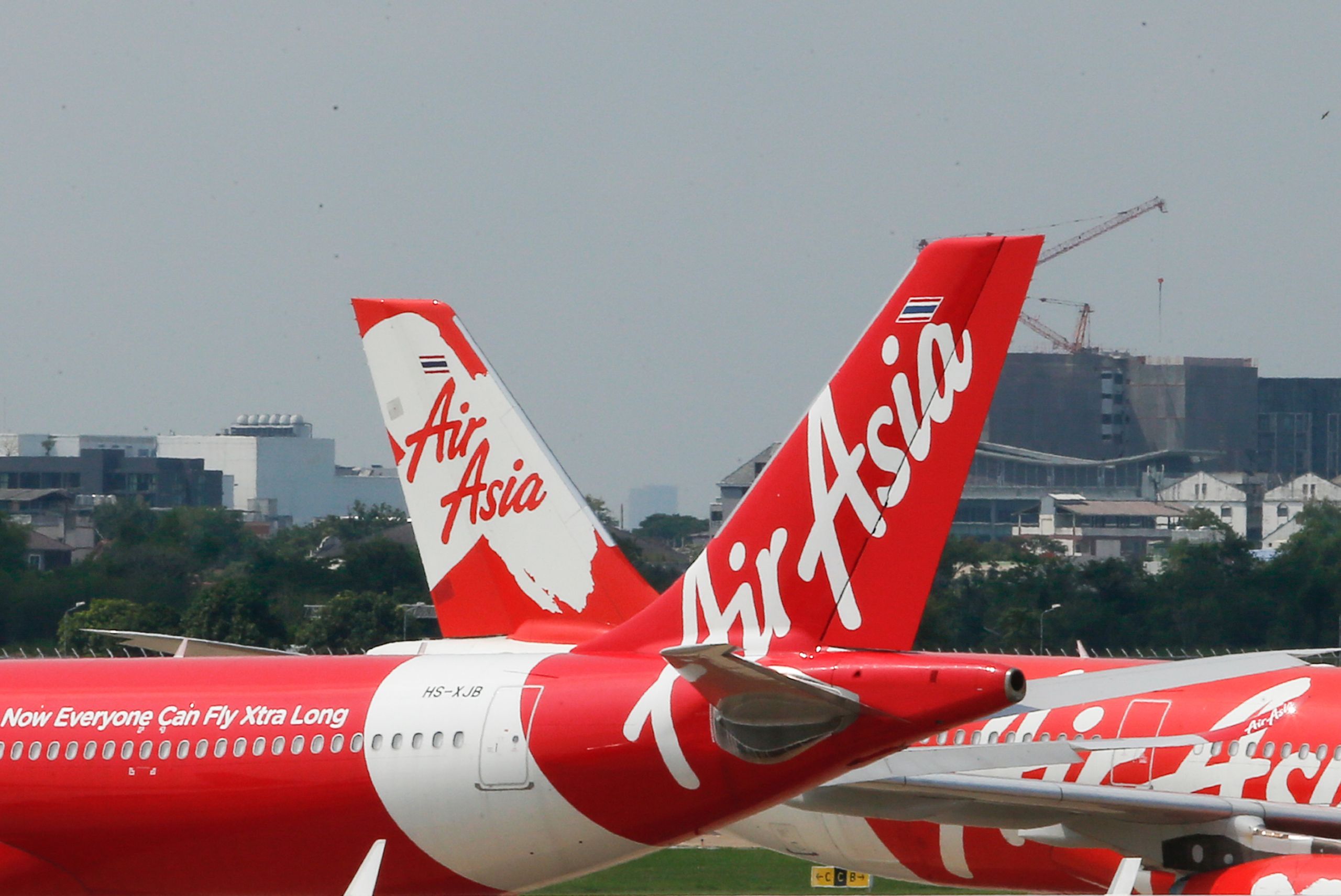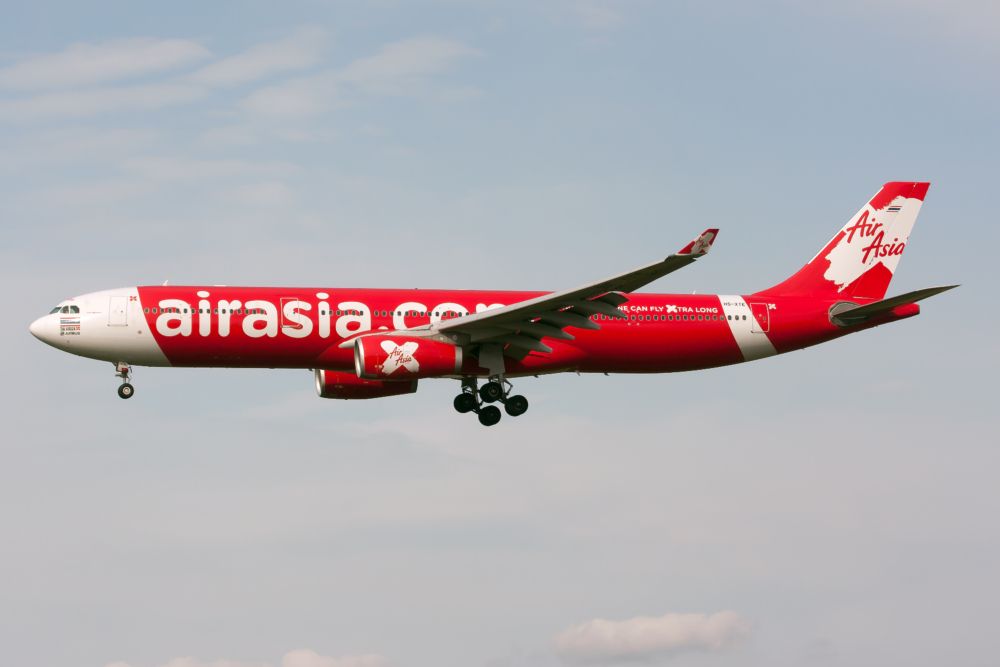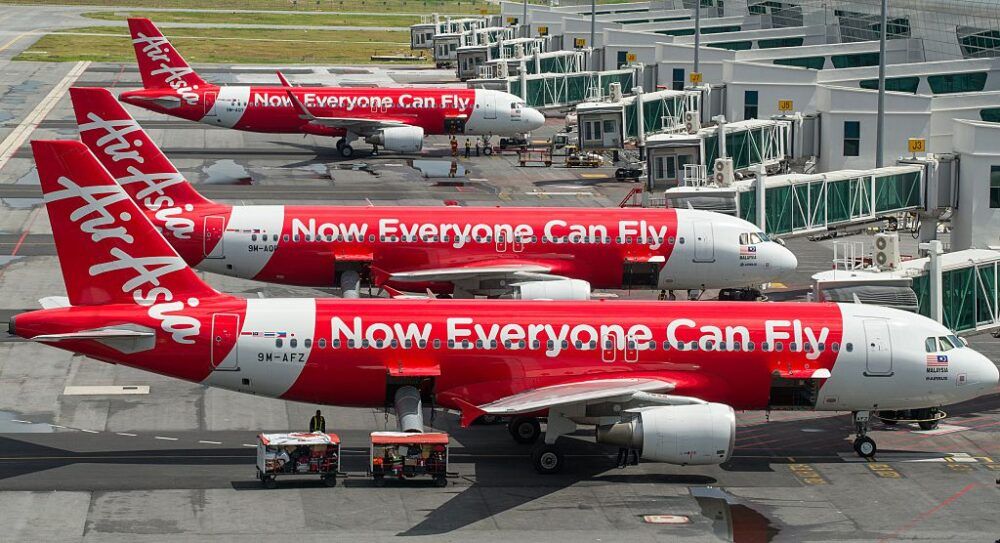Malaysian low-cost carrier AirAsia is a large airline in its own right, with nearly 100 aircraft in its fleet. This number is set to grow considerably in years to come, as it has hundreds more on order. However, the airline also has several subsidiaries situated throughout Asia, with fleets and networks of their own. Let's take a look at the planes that each of these flies.
AirAsia itself
Starting with AirAsia itself, data from ch-aviation.com shows that the Malaysian budget airline present has 97 aircraft in its fleet. The majority of these (66 planes) are examples of the Airbus A320-200. These narrowbody twinjets have an average age of 8.9 years old. Meanwhile, the rest of AirAsia's fleet consists of next-generation Airbus narrowbodies.
29 of the remaining 31 aircraft are A320neos, which clock in at just 3.9 years old on average. However, its youngest jets are its two A321neos, which have an average age of just two years old. In years to come, AirAsia is going to receive another 354 examples of this stretched modern narrowbody. These will increase both its capacity and operational efficiency.
Stay informed: Sign up for our daily and weekly aviation news digests.
Long-haul operations
The wider AirAsia group also has widebody aircraft at its disposal, which you can find at its long-haul subsidiary AirAsia X. This carrier presently has 22 Airbus A330-300s in its fleet, although just four are presently active. They have an average age of 10.1 years old, and each seats 377 passengers across two classes. AirAsia X also has 78 A330-900s on order.
Interestingly, AirAsia X is also gearing up to receive certain narrowbody aircraft. Single-aisle jets are becoming an increasingly common sight on longer routes, and the carrier plans to tap into this zeitgeist by acquiring 30 examples of the upcoming Airbus A321XLR.
The group also has a low-cost long-haul subsidiary elsewhere in Asia. Indeed, Thai AirAsia X presently has nine A330-300s and two A330-900s in its Bangkok-based fleet. A similar subsidiary used to exist in Indonesia, before ceasing operations in January 2019.
Other Asian subsidiaries
Away from its Malaysian and long-haul operations, the AirAsia group also has several subsidiaries situated elsewhere in the continent that give the airline its name. While it no longer has a long-haul subsidiary in Indonesia, its standard brand continues to operate there as Indonesia AirAsia. This carrier has 26 A320s in its fleet, of which seven are active.
On a larger scale, Thai AirAsia has a fleet of 58 Airbus jets, with the majority (54 aircraft) being A320s. Next-generation models also have a presence there, in the form of the A320neo (11 examples) and the A321neo (two examples). It used to fly the Boeing 737-300.
Finally, AirAsia also has subsidiaries in India and the Philippines. The former of these bears the name AirAsia India, and flies 30 A320s and five A320neos. Finally, Philippines AirAsia, has a uniform fleet of 24 A320s, although just five of these are presently active.
Have you ever flown with AirAsia or one of its subsidiaries? Which is your favorite plane in the group's fleet? Let us know your thoughts and experiences in the comments!



